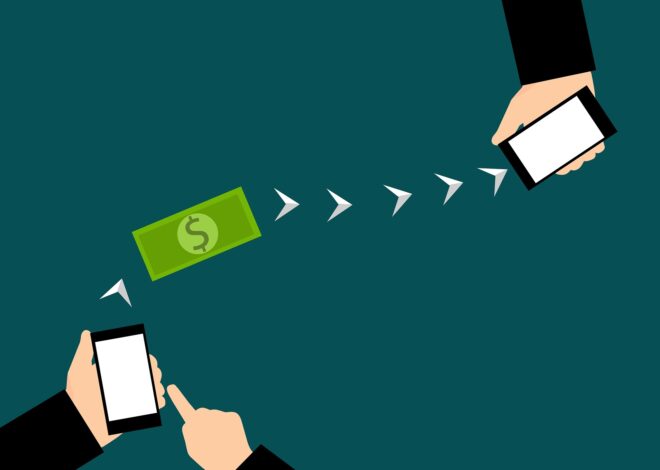
Decoding Bank Statements: A User’s Manual
Introduction to Bank Statements
A bank statement is a document that is issued by a bank, providing a detailed summary of the financial transactions that have occurred in a specific account over a set period, typically a month. It serves as a record of all the inflows and outflows in the account, including deposits, withdrawals, fees, and interest earned.
Bank statements are essential tools for personal and business financial management. They provide valuable information that can help account holders track their spending, identify any unauthorized transactions, and manage their finances more effectively.
Understanding a bank statement can seem daunting due to the various terms and figures. However, with a bit of knowledge and practice, anyone can learn to decode their bank statement effectively. This skill is crucial for maintaining financial health, avoiding potential fraud, and ensuring accurate record-keeping.
In the upcoming sections, we will delve deeper into the key components of a bank statement, how to read transaction details, understand the fees and charges, monitor your bank statement effectively, and spot common errors. By the end of this article, you will have a user’s manual to decoding your bank statement.
Stay tuned as we unravel the complexities of bank statements, turning them into a helpful tool for your financial journey.

Understanding Key Components of a Bank Statement
A bank statement is composed of several key components that provide a wealth of information about your account. Here are the main elements you’ll find in your bank statement:
- Account Information: This includes your bank’s name, your name, the account number, and the type of account (such as checking or savings).
- Statement Period: This indicates the time frame that the statement covers, typically a month.
- Beginning and Ending Balance: The beginning balance is the amount in your account at the start of the statement period, and the ending balance is the amount at the end of the period.
- Deposits: This section lists all the money that has been added to your account during the statement period. It can include salary deposits, cash or check deposits, and electronic transfers.
- Withdrawals: This includes all the money that has been taken out of your account. Withdrawals can be in the form of ATM withdrawals, checks paid, debit card transactions, bank fees, or any other kind of payment.
- Interest Earned: If your account earns interest, the amount earned during the statement period will be listed here.
- Bank Fees: Any fees charged by the bank, such as monthly service fees, ATM fees, or overdraft fees, will be itemized in this section.
- Daily Balance: Some bank statements provide a daily account balance. This can be helpful for tracking how much money was in your account on any given day of the statement period.
Understanding these components is the first step in decoding your bank statement. In the next sections, we’ll delve deeper into how to read transaction details, understand the fees and charges, monitor your bank statement effectively, and spot common errors. Stay tuned!

How to Read Transaction Details
Transaction details are the heart of your bank statement. They provide a record of all the activity in your account during the statement period. Here’s how to read them:
- Transaction Date: This is the date when the transaction occurred. It’s important to note that this may not be the same as the date when the transaction was posted to your account.
- Transaction Description: This provides details about the transaction. It could include the name of the merchant for debit card purchases, the check number for check transactions, or the name of the depositor for deposits.
- Debit or Credit: Debits (Dr) are money going out of your account (such as payments or withdrawals), and credits (Cr) are money coming into your account (like deposits or refunds). These will usually be in separate columns and will be clearly marked.
- Amount: This is the amount of money that was either debited from or credited to your account.
- Running Balance: Some bank statements include a running balance. This is the balance in your account after each transaction is posted.
Remember, if you see a transaction you don’t recognize, it’s important to investigate it. It could be a sign of fraudulent activity. In the next sections, we’ll discuss how to understand fees and charges, monitor your bank statement effectively, and spot common errors. Stay tuned!
Fees and Charges Explained
Bank statements often include various fees and charges. Understanding these can help you manage your account more effectively and avoid unnecessary costs. Here are some common types of fees and charges you might see:
- Monthly Maintenance Fee: Some banks charge a fee for maintaining your account. This fee can often be waived if you meet certain criteria, such as maintaining a minimum balance or setting up direct deposit.
- ATM Fees: If you use an ATM that is not in your bank’s network, you may be charged a fee. This can include both a fee from your bank and the bank that owns the ATM.
- Overdraft Fees: If you spend more money than you have in your account, you may incur an overdraft fee. Some banks offer overdraft protection services to help you avoid these fees.
- Returned Item Fee: If you write a check or make a payment that exceeds your account balance, the bank may return the item unpaid and charge a fee.
- Foreign Transaction Fees: If you make a purchase in a foreign currency or use your card overseas, you may be charged a foreign transaction fee.
- Paper Statement Fee: Some banks charge a fee if you choose to receive paper statements by mail instead of electronic statements.
Remember, fees can add up quickly, so it’s important to understand what each fee is for and how you can avoid it. In the next sections, we’ll discuss how to monitor your bank statement effectively and spot common errors. Stay tuned!
Tips for Monitoring Your Bank Statement
Monitoring your bank statement is an essential practice for maintaining financial health. It allows you to keep track of your spending, identify any errors, and understand your financial habits better. Here are some tips to help you monitor your bank statement effectively:
- Regularly Check Your Statement: Make it a habit to review your bank statement at least once a month. This regular check will help you stay updated with your financial status and catch any discrepancies early.
- Understand Your Transactions: Familiarize yourself with the types of transactions that appear on your statement. These could be ATM withdrawals, debit card purchases, direct deposits, or bank fees. If you see a transaction you don’t recognize, investigate it.
- Track Your Spending: Use your bank statement to track your spending. It can help you understand where your money is going and identify areas where you can potentially save.
- Verify Your Deposits and Withdrawals: Ensure that all your deposits and withdrawals match your own records. This includes your paycheck deposits, cash withdrawals, and online transactions.
- Look for Unauthorized Transactions: Keep an eye out for any unauthorized transactions. If you spot any, report them to your bank immediately.
- Review Bank Fees: Banks may charge fees for certain services. Be sure to review these charges and understand what they are for. If you see a fee you don’t recognize or agree with, contact your bank.
- Check for Duplicate Transactions: Sometimes, a transaction might be posted twice by mistake. If you spot any duplicate transactions, notify your bank.
- Monitor for Changes: Banks can sometimes change their fee structures or terms of service. Your bank statement will often include notices of such changes.
Remember, your bank statement is a snapshot of your financial behavior. Regular monitoring can help you manage your finances effectively and avoid potential issues. It’s your tool for a healthier financial life.
Common Errors in Bank Statements and How to Spot Them
Bank statements are generally accurate, but errors can occur. Here are some common errors that you might encounter in your bank statement and how to spot them:
- Unauthorized Transactions: These are transactions that you did not authorize. They could be a sign of fraudulent activity or identity theft. Monitor your statement regularly and report any unauthorized transactions to your bank immediately.
- Duplicate Transactions: Sometimes, a transaction might be posted twice by mistake. This can happen due to technical glitches. Always check your statement for any duplicate entries.
- Incorrect Amounts: The amount debited or credited in your account might be incorrect. This could be due to human error or system issues. Always verify the transaction amounts with your own records.
- Missing Transactions: A transaction that you made might not appear in your statement. This could be due to delays in processing or system errors. If a transaction is missing, contact your bank.
- Wrong Fees or Charges: Banks may charge fees for certain services. Sometimes, these charges might be incorrect or there might be charges for services you didn’t use. Always review the fees and charges in your statement.
- Errors in Personal Information: Your name, address, or other personal information might be incorrect in the statement. While this might seem like a minor issue, it could lead to problems in the future. Always ensure that your personal information is accurate in your bank statement.
Remember, if you spot an error in your bank statement, report it to your bank immediately. Most banks have procedures in place to rectify such errors. Regular monitoring and understanding of your bank statement can help you spot and rectify these errors promptly.








